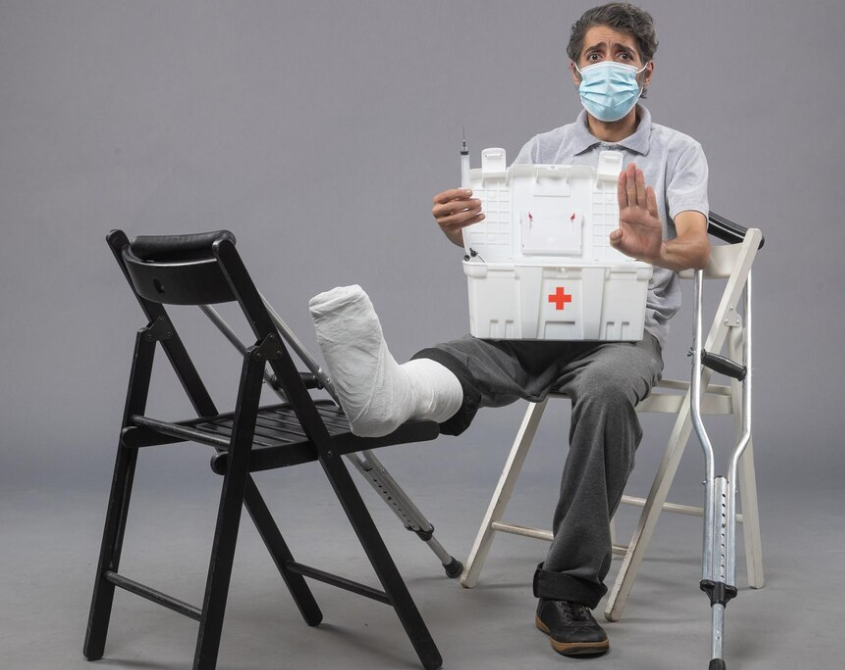Introduction
Workplace accidents have severe consequences, not only for the injured worker but also for their family. Beyond the immediate pain and suffering, an accident can lead to significant financial, emotional, and psychological burdens. Whether it’s medical expenses, loss of income, or long-term disability, the impact of a workplace injury extends far beyond the individual. This blog explores the real cost of an accident to an injured person and their family, along with strategies to mitigate these risks.
Financial Impact of a Workplace Accident
1. Medical Expenses
Immediate Costs:
- Hospitalization and emergency care
- Surgery and medical procedures
- Medications and pain management
- Diagnostic tests (X-rays, MRIs, etc.)
Long-Term Costs:
- Rehabilitation and physiotherapy
- Assistive devices (wheelchairs, prosthetics, braces)
- Home modifications for disability accessibility
- Ongoing medical checkups
The medical expenses incurred can be overwhelming, especially if the injury requires long-term treatment. Without proper health insurance or workers’ compensation, the injured person and their family may struggle with mounting bills.
2. Loss of Income and Job Security
A severe injury may prevent an employee from returning to work temporarily or permanently. This leads to:
- Immediate loss of wages
- Reduced earning capacity due to disability
- Job insecurity if the employer does not have a return-to-work policy
Families that depend on a single income are hit hardest. If the injured worker is the primary breadwinner, their family may face financial instability, difficulty in paying bills, and a lower standard of living.
3. Impact on Family Finances
Additional Expenses:
- Cost of hiring caregivers or home help
- Transportation for hospital visits and therapy sessions
- Childcare expenses if the injured person was a primary caregiver
Debt and Financial Hardship:
- Many families are forced to take loans or use credit cards to cover costs.
- Increased debt can lead to long-term financial distress, affecting the entire household.
Emotional and Psychological Effects
1. Stress and Anxiety
An accident disrupts normal life. Family members often experience stress over the uncertainty of recovery, financial stability, and the future of their loved one. Anxiety over medical bills, job loss, and lifestyle changes can be overwhelming.
2. Depression and Mental Health Issues
Both the injured person and their family members may suffer from depression, feeling helpless or frustrated with the situation. If the injury results in a permanent disability, emotional adjustment can be challenging.
3. Relationship Struggles
Injuries can strain relationships between spouses, children, and extended family members. Caregiving responsibilities, financial burdens, and emotional distress can lead to conflicts and tension within the household.
Social Consequences of an Accident
1. Isolation and Loss of Social Life
Due to mobility restrictions, chronic pain, or emotional distress, injured individuals may withdraw from social activities. The loss of independence and reduced ability to participate in family or community events can lead to loneliness and isolation.
2. Career and Professional Setbacks
If the injury prevents the individual from returning to their previous job, career aspirations may be put on hold or abandoned. Finding new employment with a disability can be difficult, adding to financial stress.
3. Educational Impact on Children
If a family struggles financially due to a workplace accident, children may have to compromise on their education. Reduced financial resources might mean attending a lower-quality school, missing extracurricular activities, or even dropping out to support the family.
Legal and Compensation Aspects
1. Workers’ Compensation Claims
Many countries have workers’ compensation programs that provide financial assistance for medical expenses, rehabilitation, and lost wages. However, the process of claiming compensation can be lengthy and complex.
2. Disability Benefits
If the injury results in long-term disability, the individual may be eligible for disability benefits. These benefits can help replace lost income, but they are often lower than the individual’s previous earnings.
3. Lawsuits and Legal Battles
In some cases, workers may have to take legal action against employers or insurance companies to receive fair compensation. Legal battles can be stressful, expensive, and time-consuming, adding to the burdens faced by the injured person and their family.
Preventing Workplace Accidents
1. Workplace Safety Measures
- Proper training and safety awareness programs
- Use of personal protective equipment (PPE)
- Regular safety inspections and risk assessments
- Implementation of ergonomic workstations
2. Employer Responsibility
- Ensuring compliance with occupational safety standards
- Providing a safe work environment
- Encouraging reporting of hazards and near-misses
- Supporting injured workers with return-to-work programs
3. Employee Awareness and Self-Care
- Adhering to safety protocols
- Taking regular breaks to prevent fatigue-related accidents
- Reporting unsafe working conditions
- Seeking medical help immediately after an injury
Conclusion
A workplace accident has far-reaching consequences, affecting the injured person physically, financially, and emotionally. Families bear the burden of medical costs, lost income, stress, and lifestyle changes. Employers and employees must prioritize workplace safety to prevent accidents and minimize these devastating impacts. By fostering a culture of safety and ensuring fair compensation policies, we can protect workers and their families from the long-term costs of workplace injuries.
“Start Your Website Journey Today – Exclusive Hostinger Discounts!”










